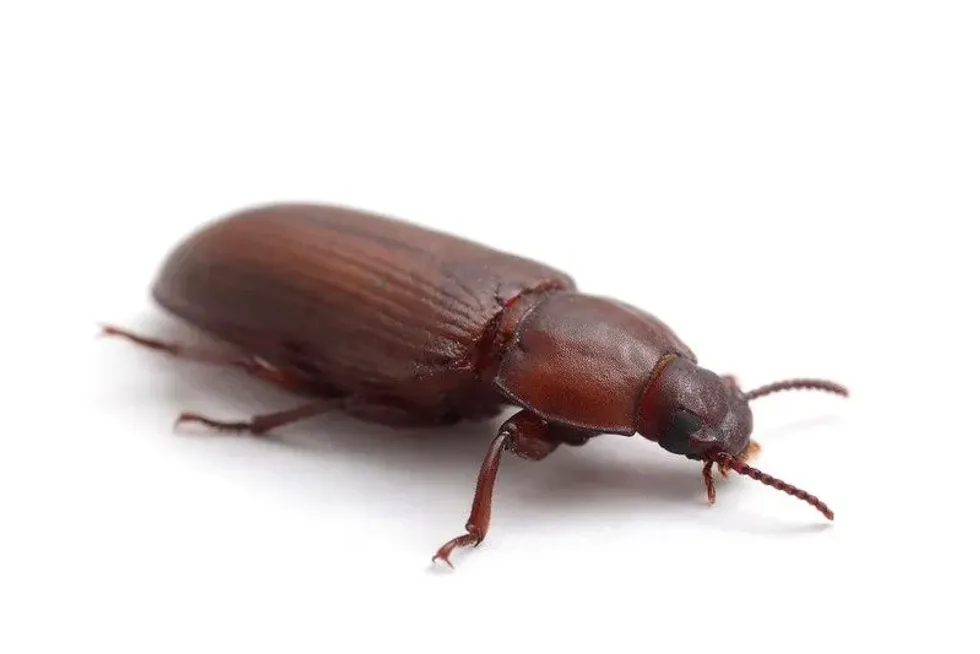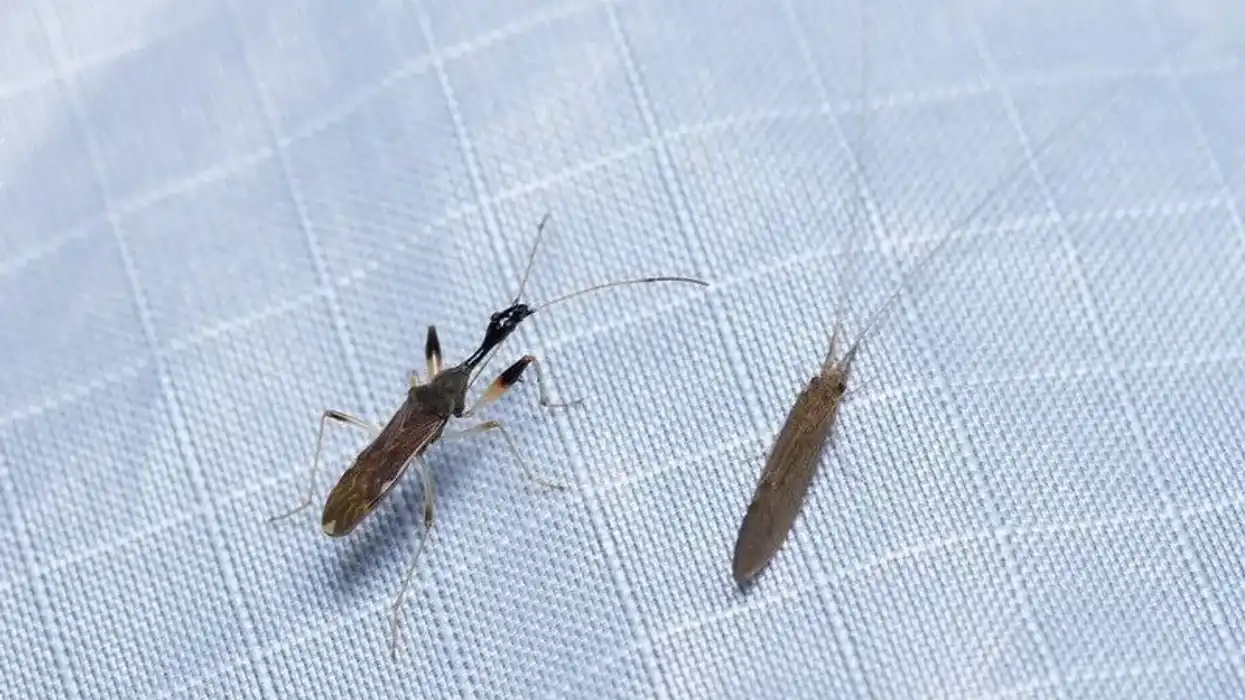The darkling beetle is the common name given to the family of beetles, Tenebrionidae.
With over 20,000 species within this family, this beetle can be found across the planet with significant populations in North America and Africa. The etymology of Tenebrionidae is the Latin word Tenebrio, which means 'seeker of dark places'.
Thus, the English name, the darkling beetle came into being.
Although, it must be noted that despite the fact that most members of the family of Tenebrionidae inhabit darker places, genera such as Stenocara and Onymacris are the opposite in the sense that they are active during daylight and inactive by the night.
The darkling beetle has a four stage lifecycle that consists of eggs, larva, pupa, and finally the adult beetle.
These beetles have an interesting relationship with humans, with them being viewed as pests, food for pets, feed for reptiles, bait for fishes, or even food for consumption depending on which country or culture you are a part of.
Such is the diversity of darkling beetles that despite being generally flightless, mealworm beetle (the larva form of is called mealworms) can fly to disperse. Even when it comes to their appearance there is variety. For instance, the wooly darkling Beetle, which is found in North America, has brightly colored reddish-brown hair that covers its exoskeleton.
Indulge in these darkling beetle facts for kids that are just as fun for adults and get to know more about the insects.
Darkling Beetle Interesting Facts
What type of animal is a darkling beetle?
The darkling beetle is the common name given to the family Tenebrionidae, which has over 20,000 species. The Tenebrionidae is a type of insect.
What class of animal does a darkling beetle belong to?
The darkling beetle belongs to the class of Insecta with other insects such as the dragonfly and worms.
How many darkling beetles are there in the world?
With over 20,000 species in the family Tenebrionidae, it is hard to estimate what the population of these beetles is.
Where does a darkling beetle live?
This insect has adapted to live in deserts and forests.
What is a darkling beetle's habitat?
Family Tenebrionidae consists of the kind of beetles that can be spotted under stones, decaying logs, or bracket fungi. Some of the species are diurnal and can be found in open. Many species are even adapted to desert conditions.
Who do darkling beetles live with?
The darkling beetle generally lives alone and does not necessarily require a colony to thrive in.
How long does a darkling beetle live?
As we have mentioned, darkling beetles is not one species, and thus, each species has a varying life span. But as a general rule, the darkling beetle lives longer than other insects due to its slower metabolism. Most species live between six months to two years, while few can survive up to 10 years.
How do they reproduce?
The life cycle of a darkling beetle is fascinatingly categorized neatly into four distinct stages. The stages are egg, larva, pupa, and adult. The female of this species are prolific at laying eggs, and over a lifespan can lay about 500 eggs.
What is their conservation status?
While most darkling beetles are not under any threat of extinction, two are considered threatened, and one is unfortunately critically endangered.
Darkling Beetle Fun Facts
What do darkling beetles look like?
Darkling beetles are small rounded worms that are generally scaly with their exoskeletons being shades of brown, black, or cream.
How cute are they?
While these are beautiful creatures in their own way, most humans find these beetles repulsive.
How do they communicate?
Darkling beetles communicate through pheromones.
How big is a darkling beetle?
The darkling beetle can vary in size and shape. Adult darkling beetle measurements can range in length from 2-35 mm. The larvae are about 25 mm long.
How fast can darkling beetles move?
It's hard to define a range of speed for these beetles. Although, they are not fast by any means.
How much does a darkling beetle weigh?
Darkling beetles can be big for insects, but they still weigh only about 60-110 mg.
What are their male and female names of the species?
There are no separate names for the male and female darkling beetle.
What would you call a baby darkling Beetle?
A baby darkling beetle can be called larvae or pupa.
What do they eat?
Darkling beetles are omnivores that are proficient scavengers as well. The beetle can feed on dead insects, decaying leaves, fresh plant matter, rotting wood, and fungi.
Are they harmful?
The darkling beetle is absent from any cantharidin, the toxin in blister beetles, thus you don't need to be too scared of a darkling beetle bite. Although, some darkling beetle larvae are harmful to human indirectly as they feed on stored grains.
Would they make a good pet?
These beetles don't make the best pets. But, if you do decide to have one, keep it in a well-ventilated space and pay attention to its adaptations and feed accordingly.
Did you know...
Darkling beetles cannot fly due to the fact that they have fused wings (known as elytra). These wings are sealed to their body making it impossible for them to take flight. The only exception to this is the Tenebrio Molitor that can take flight.
Anatomy of the darkling beetle
The darkling beetle has distinct physical characteristics. Firstly, they have an antenna that is 11-segmented. Secondly, the first of its abdominal sternite is whole as opposed to being divided by the hind coxae. Thirdly, their eyes have a notched frontal ridge.
Having darkling beetles in your house
Darkling beetles can be viewed as an invasive pest, food for your pets, or in some cultures food for human consumption. In the mealworm beetles' larva stage, they can be used as feed for reptiles, fish, and birds.
Here at Kidadl, we have carefully created lots of interesting family-friendly animal facts for everyone to discover! You can even occupy yourself at home by drawing one on our Darkling beetles coloring pages.









